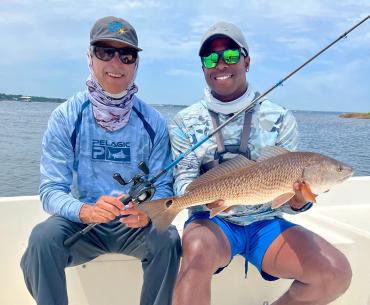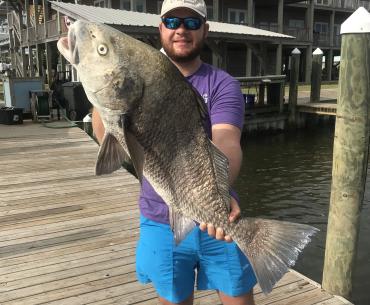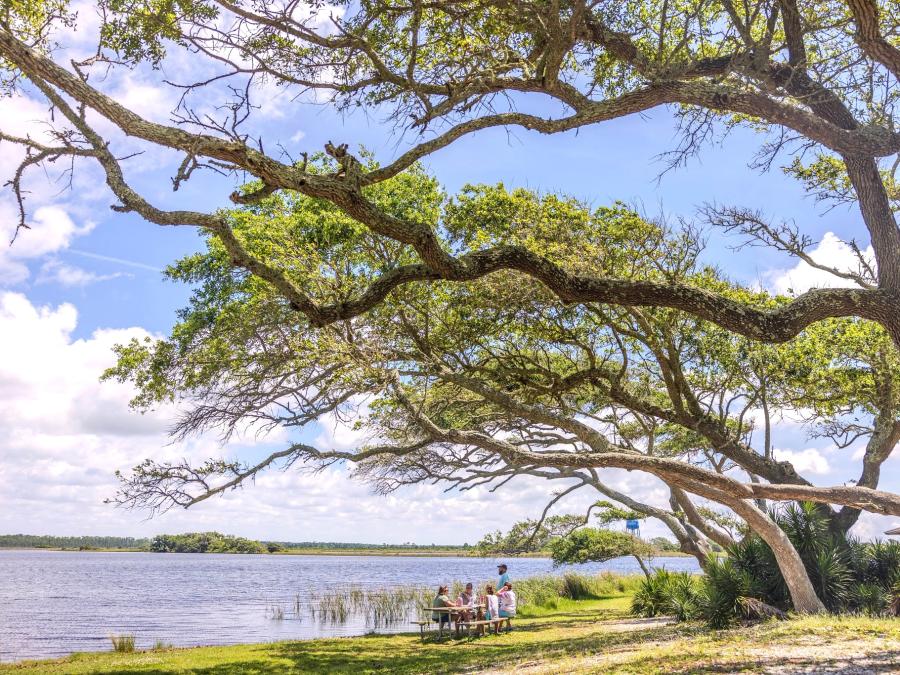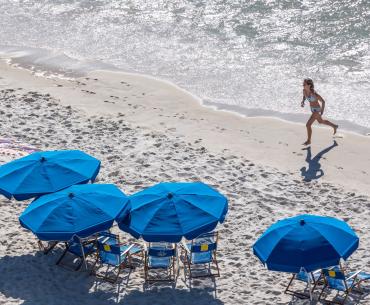
Shark sightings are not as uncommon you may think along the Alabama Gulf Coast, but Dr. Sean Powers insists that this indicates a healthy ecosystem in the Gulf of Mexico.
For those enjoying our beautiful beaches, Powers, head of the University of South Alabama’s Marine and Environmental Sciences Department, says most sharks in Gulf Shores that inhabit the shallow water in the nearshore zones are “really small.”
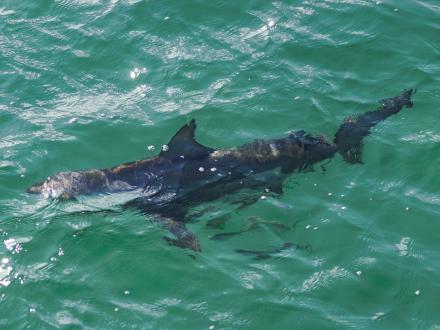
Are There Sharks on Alabama’s Beaches?
“Alabama Beaches has a diversity of sharks,” Powers said. “The Gulf has about 50 shark species with about 20 to 30 species that beachgoers and fishermen can encounter. Most of those are really small and only pose an aggravation to the fishermen.”
While there are sharks in Gulf Shores & Orange Beach, the designated swim areas are safe, and shark attacks are extremely rare. Visitors can enjoy the waters with peace of mind, as local safety measures are in place to protect them.
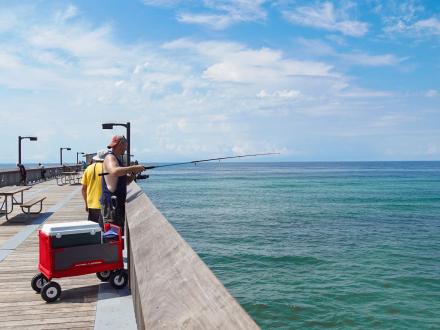
Types of Sharks in Gulf Shores & Orange Beach
Powers said the most common shark species in Alabama Beaches is the Atlantic sharpnose, which maxes out at about 3½ feet long. Spinner, blacknose, and blacktip sharks are the species that inshore anglers and beach fishermen could possibly interact with, while divers may see nurse sharks off our shores.

Atlantic Sharpnose Shark
Atlantic sharpnose sharks are small, slender sharks that can grow up to 3.5 feet long. They have a streamlined body, a pointed snout, and distinctive white spots on their sides. These sharks are common in the nearshore waters of Alabama Beaches, especially during the warmer months.
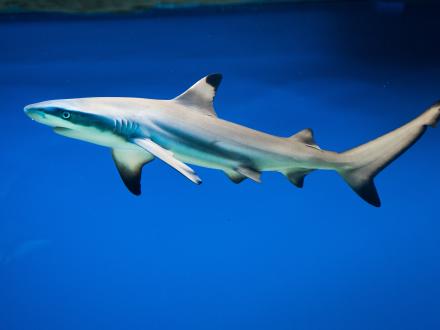
Blacktip Shark
Blacktip sharks are known for the black tips on their dorsal and pectoral fins. They can grow up to 8 feet long and can be seen leaping out of the water and spinning, especially near the shorelines.

Spinner Shark
Spinner sharks are named for their habit of leaping out of the water and spinning in the air. They can reach lengths of up to 10 feet and are characterized by their slender bodies and long, pointed snouts. Spinner sharks are often found in warmer waters.
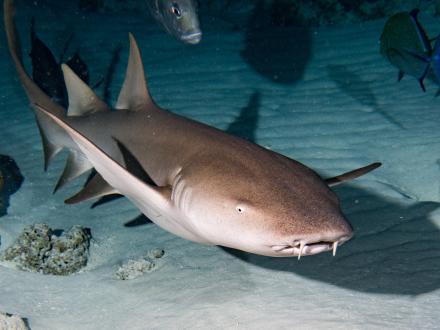
Nurse Shark
Nurse sharks are slow-moving bottom-dwellers that can reach lengths of up to 14 feet. They have distinctive barbels on their snouts and are commonly found resting on the seafloor near reefs and ledges in Alabama Beaches.

Blacknose Shark
Blacknose sharks are small, usually growing to about 5 feet long, and are named for the distinctive black spot on the tip of their snouts. They prefer the warm, shallow waters, where they are often seen hunting for small fish.
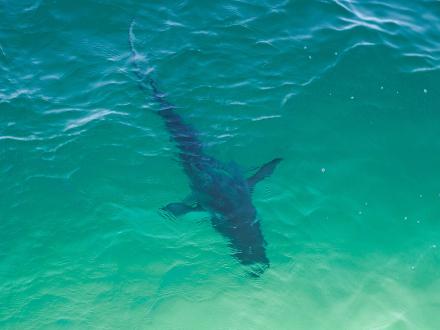
Seasonal Patterns of Shark Activity in Alabama Beaches
Powers said anglers won’t encounter nearly as many sharks in the spring but that shark numbers increase in June.
“Even the small ones will be offshore in more stable temperatures until the water warms up, and they come inshore to feed,” he said. “Then, when it gets too hot in August and September, they kind of retreat. They are really temperature-sensitive. They don’t like it too cold or too hot.”

Bull Sharks on Alabama's Beaches
“The ones people have to be alert for are bull sharks, and we get a lot of bull sharks in Alabama close to shore and in the bays. More than any other shark in Orange Beach & Gulf Shores, bull sharks are specialized for estuaries. They can deal with fluctuating salinities, high temperatures, and high turbidity. It’s kind of what they’ve evolved to do. The thing is, bull sharks don’t have great vision. They’re mainly going by vibrations or signs of distress or smell.”
Powers said Alabama is a significant nursery ground for bull sharks and tiger sharks, and it’s not unusual to hear reports of bull sharks being hooked or sighted far up the Alabama and Tombigbee river systems.
“The furthest north a bull shark has ever been recorded is St. Louis on the Mississippi River,” he said. “So they are very well adjusted to the conditions in the bays along the Alabama coast.”
Powers said every time he gives a presentation on sharks. He emphasizes that any severe encounter with sharks is still a “rare, rare” occurrence.
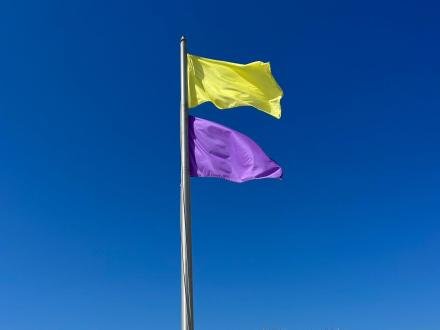
Stay Safe: Beach Flag System for Shark Alerts
However, he advises anyone visiting the Gulf Shores-Orange Beach area to be mindful of the beach flag warning system.
“If they see a purple flag, that’s an indication of dangerous sea life,” Powers said. “If they see a shark, they can just withdraw, and the sharks will be on their way shortly. The bull sharks and blacktip sharks are the ones the beachgoers will probably even notice. The smaller ones, they probably won’t even notice.”
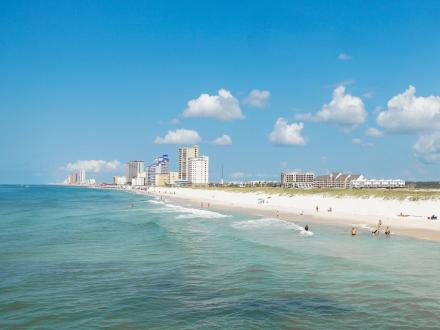
Additional Safety Tips to Avoid Shark Encounters
- Swim with a buddy, as sharks are less likely to approach groups.
- Avoid swimming at dawn or dusk when sharks are most active.
- Refrain from wearing shiny jewelry that can attract sharks.
- Stay close to shore, where sharks are less likely to be found.
- Avoid excessive splashing, as it can mimic the distress signals of prey and potentially attract sharks.

Shark Fishing Trips
When you head offshore on a fishing trip, Powers said the most common shark species that anglers will encounter are tiger and sandbar sharks. Anglers who reel in only half a reef fish are likely dealing with those two species.
“Those are the ones the red snapper fishermen encounter with the bite-offs,” he said. “Those species are increasing in abundance. From what the fishermen have told me, the tigers and sandbars are absolutely healthy, and they’re getting more bite-offs than they’ve ever seen.”
Several Alabama charter boats offer shark fishing trips in the Gulf. Shark fishing in Alabama is legal, provided strict regulations are followed, and it is not permitted from the shore. Be sure to check out the dates for shark fishing season and book your trip from one of the several Alabama charter boats that offer shark fishing trips. And be aware of the numerous species of sharks that are prohibited from being harvested, including the sandbar shark.
